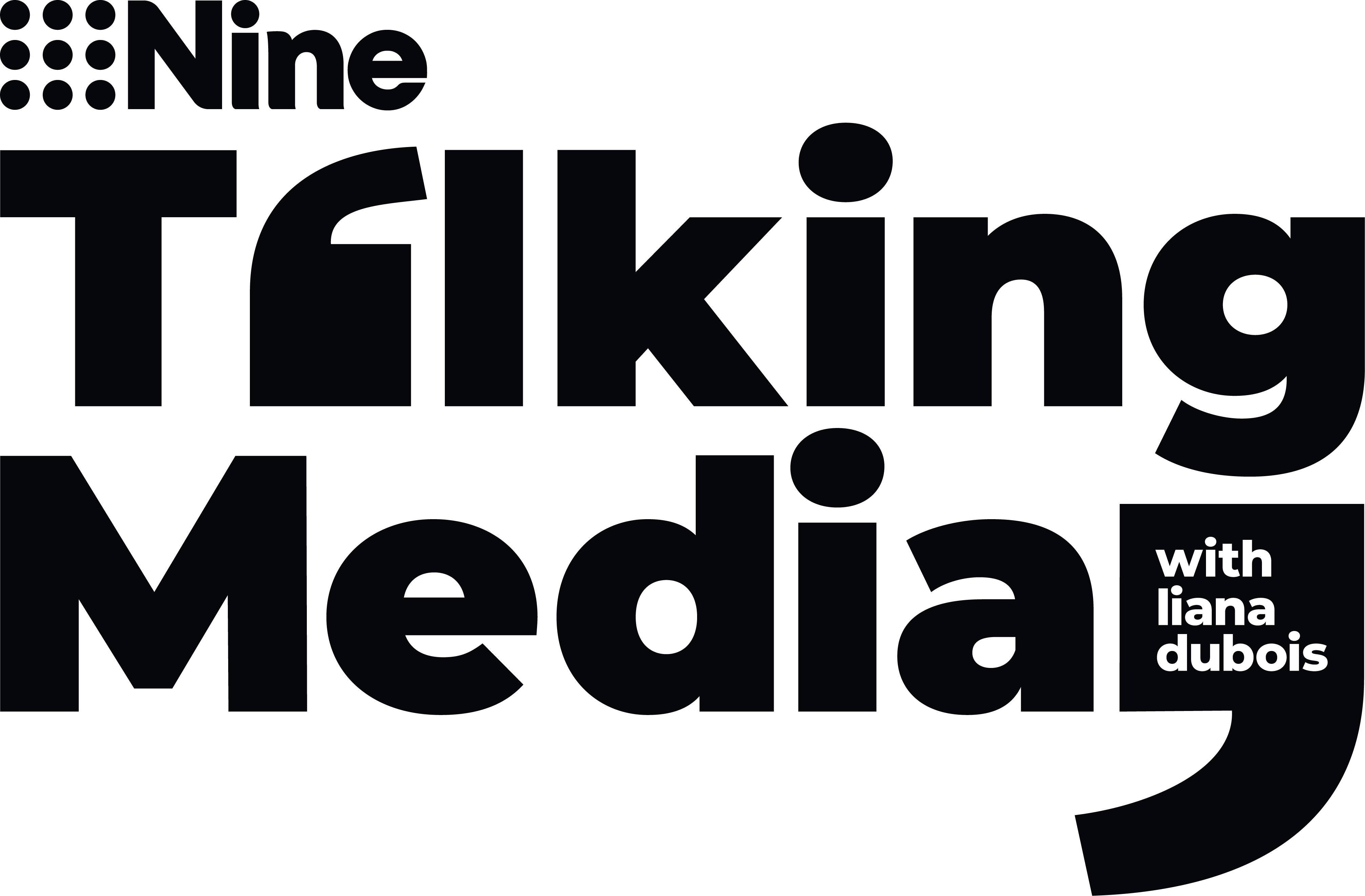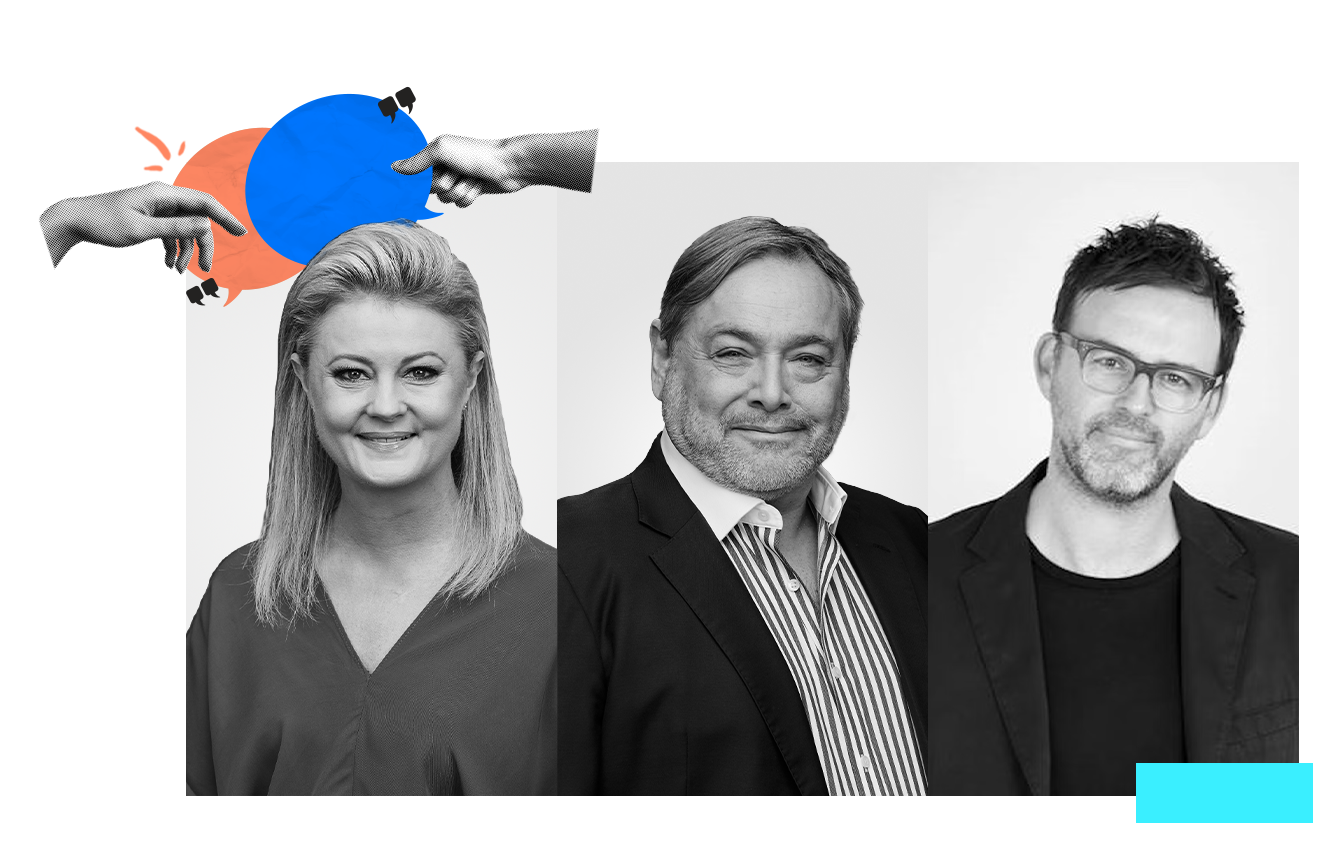



THINK BIGGER
Telstra CMO Brent Smart says brands need to ditch omnichannel obsession, ‘luggage matching’ and junk ads for a deeper cultural connection, bigger ideas and ultimately 5x bigger impact
Telstra CMO Brent Smart thinks most ads are “pollution” and marketers are way too rational in their messaging, missing growth as a result. Meanwhile, omnichannel obsession will deliver diminishing returns. Think bigger across fewer channels, says Smart. His CEO appears to agree, as do Nine CMO Liana Dubois and Content Chief Adrian Swift. Plus, what great TV content – and great TV ads – look like.
Don't match luggage
An “obsession” with “360-degree omnichannel” marketing campaigns risks killing growth, warns Telstra CMO Brent Smart, because the tail is effectively wagging the dog – and the pursuit of quantity over quality is turning off audiences and customers.
“Most advertising is pollution,” says Smart. He instead aims for “the right 360 degrees” done well, in the right channels, where everything ladders back to a “big idea that’s going to have a big impact, but most importantly is able to integrate everything across multiple channels.”
Marketing effectiveness rulebooks, says Smart, show that harnessing multiple channels drives effectiveness – because ongoing media fragmentation requires stitching audiences together. “But that taps out at five or six channels,” he says. “Once you get beyond that, you’re getting diminishing returns.”
Which means picking the right channels to create scale and network effects – and crafting creative specifically for those channels. Not “matching luggage,” says Smart, but “how does it to turn up in a way that’s really fit for the channel, fit for the platform … but still laddering up to a core idea.”
Linear TV, he says, doesn’t deliver the mass reach it used to in a single Sunday night hit, but it remains a brand-building cornerstone. “It still plays a critical role, but you’ve got to build around it – it can’t be the silver bullet for reach it used to be.”
Neither can it be a silver bullet for business results if the ads are dull. Emotional, well-crafted storytelling over rational messaging is crucial to moving the needle, says Smart, because “most people aren’t ready to buy now”, so hitting them with rational retail offers is a waste of their time and marketers’ money. “I think most marketers are missing that opportunity,” he suggests.
Play a bigger role
Adrian Swift, Head of Content, Production & Development at Nine, says brand marketers and TV networks are effectively in the same game: Finding audiences across multiple channels through storytelling. Audiences won’t hang around if the stories are boring, says Swift, while Nine CMO Liana Dubois says both the ads and the programming have to be great – because humdrum ad breaks risk people switching channel and crimp the consumer experience.
Swift agrees with Smart that tapping into emotion is key, but “not to be too highfalutin about it.” He says TV has a duty to go beyond emotional resonance and into cultural fabric by telling the human stories and surfacing societal issues that might not otherwise reach a mainstream audience.
Smart says marketers must likewise help to shape culture – and thinks while many CMOs are morphing into chief customer officers, there is a further step required.
“I don’t think it’s enough anymore just to be the voice of the customer as a marketer. I think the unique perspective that marketers can bring – and should bring – is to be the voice of culture. Understand what’s going on in culture,” he says.
“I always say a desk is a dangerous place to do marketing from. Get out and watch the latest Marvel film, go and watch what people are watching on Netflix, watch Swifty’s shows, understand what’s going on in culture, because ultimately brands need to have that cultural lens when we create stuff.
“The truly great brands don’t just reflect what’s happening in culture. They create things that become a part of culture.
“If you can get to that level as a brand, then it creates a whole different level of conversation about your brand, connection with your brand, a really revered place for your brand. For me, that’s the ultimate goal.”
Find untapped niches
Tapping into culture means going beyond mainstream thinking and traditional mainstream audiences. Nine’s Dubois and Swift suggest FAST channels can play a role in packaging those niches to create a richer cultural whole.
“The Olympics is the perfect example of that where Nine will have up to 40 FAST channels – it will be everything from a curling FAST channel [for the Winter Games], the skateboarding channel, to the breakdancing channel – both are new sports for Paris,” says Swift.
“There will be a serious audience for those things, and it means we can go from the macro [of mass audiences] to the non-macro [of deeper, highly engaged niches] and bring them into our world.”
What great integration looks like
In its latest financial filings, Telstra’s CEO called out its “strong” Christmas campaign as driving Q4 results. Smart says the ad – a story of a lost reindeer which ultimately encouraged kids to call Santa for free on Telstra’s payphones – saw those call volumes increase 5x and engagement rocket.
“It’s awesome to have our CEO talk about marketing,” says Smart. “We could have just done classic retail ads like the rest of the category. But we took the opportunity to tell a bigger, richer, emotional story.”
Smart thinks the best example of integration done well lies across the ditch. As an ex-insurance marketer at IAG, he lauds insurer Partners Life’s recent efforts. He reckons it sets the benchmark for TV-brand partnerships.
“They came up with this incredible idea called ‘Last Performance’. They partnered with New Zealand’s most popular murder mystery show, The Brokenwood Mysteries. In each show, someone dies,” says Smart.
“What they did quite brilliantly was at the end of each episode, just before the credits rolled, they brought that person back to life, the actual character – and they talked about how surprised they were that they were dead, and that they should have got life insurance.
“It was seamlessly integrated into the show and they only ran that one spot at the end of each episode. That’s all they did – and it was amazing.
“I think leads to their website were up over 150 per cent. It was incredibly successful and incredibly effective – such a fantastic piece of storytelling and understanding of content.”
What powerful TV looks like
Nine’s Adrian Swift likewise looks overseas for the most powerful piece of storytelling he’s seen of late – ITV’s Mr Bates vs. The Post Office.
The show dramatised a sadly true story of “state and corporate malfeasance”, in which the UK’s Post Office prosecuted sub-postmasters – people running small post offices – for accounting errors that were ultimately the fault of its IT systems, accusing them of theft. “It led to not just prosecution and bankruptcy, but suicide,” says Swift.
Despite the problems being reported on in the UK for years, there was “no real effect,” says Swift.
“Then ITV put out Mr Bates vs. The Post Office and the entire nation sat up and took notice. People were handing back OBEs and MBEs, people were being sacked. Suddenly the earth moved and now they’re all going to be compensated to the tune of millions of pounds,” says Swift.
“That it took a drama on ITV – on free-to-air television with ads – to galvanise a nation in defence of these people who, to this point, hadn’t been properly defended, fascinated me.
“I wasn’t even sure TV still had the power to do that. It turns out it does.”
Have a question or comment about this episode? We'd love to hear from you. Please fill in the form.



